How Is Parenting A Challenging Child Like Trying To Lose Weight?
HOW IS PARENTING A CHALLENGING CHILD LIKE TRYING TO LOSE WEIGHT? (Issue 20)
by V. Mark Durand, PhD
After decades of research and millions of dollars spent on diets, we now know the secret to losing weight—eat fewer [empty] calories and move more! Not exactly a major new headline, yet millions still struggle with this simple strategy. Why? Because our thoughts and emotions get in the way of making better choices (e.g., eating healthier foods, getting more exercise). Anxiety can cause you to lose your willpower and eat that chocolate cake. Stress and thoughts of your past failures make you once more skip that trip to the gym. Our new research is finding that some of the same obstacles that interfere with successful weight loss also face parents who are challenged by their child’s outbursts. Despite hours of parent training, many families simply are not able to follow through on the techniques they learn because of interfering thoughts and emotions.
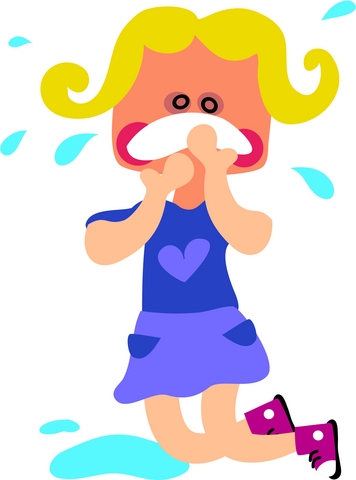 Picture a child screaming in a supermarket for a candy bar. Now put yourself in the place of the child’s parent. What are you thinking or feeling? If you are like almost half of the families we serve, you might be thinking what a catastrophe this is. You are becoming anxious and feel that all eyes are on you. You might also be feeling judged as a bad parent and can’t wait for this to stop. And because this seems to happen so often no matter what you try, you think that your child is just not capable of behaving. Despite your better judgment you decide to give your child the candy because you know the tantrum will end. Negative thoughts about your skills as a parent and perhaps about your child’s ability to improve seem to get in the way of good parenting skills—sometimes “giving in” just to keep the peace.
Picture a child screaming in a supermarket for a candy bar. Now put yourself in the place of the child’s parent. What are you thinking or feeling? If you are like almost half of the families we serve, you might be thinking what a catastrophe this is. You are becoming anxious and feel that all eyes are on you. You might also be feeling judged as a bad parent and can’t wait for this to stop. And because this seems to happen so often no matter what you try, you think that your child is just not capable of behaving. Despite your better judgment you decide to give your child the candy because you know the tantrum will end. Negative thoughts about your skills as a parent and perhaps about your child’s ability to improve seem to get in the way of good parenting skills—sometimes “giving in” just to keep the peace.
In our 5-year study across two research sites in Florida (University of South Florida, St. Petersburg) and New York (SUNY at Albany), we recruited families who had a child with significant behavior problems (e.g., severe tantrums) and who self-reported being pessimistic about their abilities as a parent and their child’s ability to change. These parents would often make statements like,
“I feel that everything is out of control,”
or
“I get upset because I feel others are judging me as a parent.”
One group received 8 sessions of behavioral parent training which included finding out the reasons behind their child’s disruptions and showing them various methods for reducing these problems. A second randomly assigned group received the same 8 sessions of parent training with the addition of “optimism training” (adapted from the pioneering work of psychologist Martin Seligman).
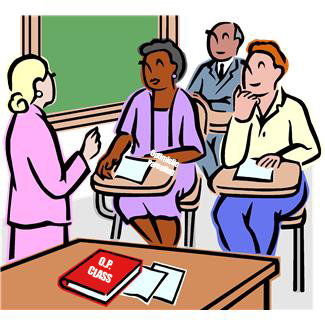 Here we taught them to become aware of the interfering thoughts and taught them skills to either distract themselves (sometimes with humor) or perhaps substitute the negative thoughts with positive ones (“I have a plan for dealing with this tantrum and things will get better.”). They learned both how to help their child but also how to be more positive and hopeful in their application of these plans.
Here we taught them to become aware of the interfering thoughts and taught them skills to either distract themselves (sometimes with humor) or perhaps substitute the negative thoughts with positive ones (“I have a plan for dealing with this tantrum and things will get better.”). They learned both how to help their child but also how to be more positive and hopeful in their application of these plans.
At an invited address at the annual meeting of the American Psychological Association this summer in Washington, D.C., I presented the results of this study. First, it was encouraging to note that the children from families in both groups improved their behavior at home significantly after only 8 sessions with the parents. And the group that received the optimism training reported even larger improvements in their child’s behavior than the group that did not receive this form of cognitive behavior therapy. Interestingly though, when we looked at how the children were behaving at home through videos before, after and one year following treatment, the child from both groups were better behaved, but not significantly different. Why would the parents from the optimism training group report bigger improvements?
To answer this question “we went back to the video tape” and looked at what the parents were doing with their children to make them better behaved. What we found was shocking. In the families who only received parent training, we saw that they became experts at avoiding problems. For one mother whose son tantrummed at bedtime, she adapted the routine by lying down with him in bed and let him watch television until he fell asleep. He was much better at bedtime now, but this was not our goal. We wanted him to get to the point where he would go to bed and fall asleep on his own. She and other parents in this group just became better at avoiding problems—a process we call the “Concession Process.”
 On the other hand, parents who received the optimism training did not concede to all of their child’s demands and persisted in getting their children to do things like put their toys away or get dressed without problems. Their optimism training helped them to keep it up and not concede.
On the other hand, parents who received the optimism training did not concede to all of their child’s demands and persisted in getting their children to do things like put their toys away or get dressed without problems. Their optimism training helped them to keep it up and not concede.
This work points out how important it is to look closely at how our treatments actually work. An important goal in clinical research—much like what is done in medicine—is to find the active ingredients in the treatment. It may also teach us to talk to clients about these cognitive obstacles (“What were you thinking to yourself when this happened?”) to following through on our suggestions.
CONCLUSION BY DIANE GOLD
We sometimes think we are alone in our quest, whether it be parenting a difficult or diagnosed child, journeying to weight loss or climbing Mt. Everest. We are not alone. Because we are not alone and we share so many traits with others, we can learn from each other. We are best off using a system created by an expert to get there, be that a psychologist, a nutrition and fitness expert, a master mountaineer or ourselves, through trial, error and intuition. When we encounter a hurdle along the way, the system will help us through.
Although many scientists now point out that calories from different sources provide different results in our body, no one disputes that healthy food and moving more are the keys to renewed health, happy weight and complementary behavior training.
From this article, we can see how breaking down the issue trains for success.
Because we all learn differently, a technique for one person may not work for another. However, one of Durand’s assets is in putting forth solutions that are surprisingly simple, yet so intense as to be used with ease in many areas.
FEEDBACK
We value your feedback. Please leave your comments or questions below this article.
______
V. MARK DURAND, PhD, AUTHOR
Mark Durand is a world renowned psychologist and professor at University of South Florida known for his work with autism spectrum disorders. He has received seven figure federal grants to study this group. He is co-editor of the Journal of Positive Behavior Interventions, is on various editorial boards, is a journal article reviewer, a long-distance runner and has been a consultant with the U.S. Departments of Justice and Education. Mark has authored three books, the newest of which is Optimistic Parenting. You can grab a copy at warriorsofweight.com in our resources section.
DIANE GOLD, PUBLISHER
Diane Gold, Founder of Warriors of Weight, Moms For Healthy Daughters, is a mentor in tai chi, kung fu and meditation, a music pro and stress expert and a dedicated mom. She believes we can learn so much from each other’s experience. She says, “The more we see our similarities, the more we can understand each other and ourselves.”

 It is the difficult interaction between mothers and daughters that requires all the courage in the world. The way this mom and daughter are communicating can be classified as ANTI-COMMUNICATION. Not all families experience it. Most do. But there’s no mistaking it when it starts to break down and erase effective human interchange. Every word exchanged or action shared sets the other off.
It is the difficult interaction between mothers and daughters that requires all the courage in the world. The way this mom and daughter are communicating can be classified as ANTI-COMMUNICATION. Not all families experience it. Most do. But there’s no mistaking it when it starts to break down and erase effective human interchange. Every word exchanged or action shared sets the other off.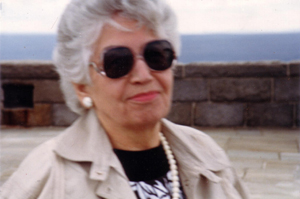
 One of the greatest tools to put us in a state of readiness is tai chi. What is it, exactly? It’s a method of exercise that teaches us to be patient, prepared, precise and powerful at all times. It’s a mind/body program that gives us a place to begin. We build a foundation of understanding how to be stable on our journey, and time reinforces the lessons as long as we do a little movement.
One of the greatest tools to put us in a state of readiness is tai chi. What is it, exactly? It’s a method of exercise that teaches us to be patient, prepared, precise and powerful at all times. It’s a mind/body program that gives us a place to begin. We build a foundation of understanding how to be stable on our journey, and time reinforces the lessons as long as we do a little movement. Tai chi requires us to slow down and move like a wave in a giant ocean of water. If we imagine the lines in a profile of the ocean, we can see each line rolling into the next. This is analogous to each body system moving harmoniously with the other. Here is a graphic representation of this concept.
Tai chi requires us to slow down and move like a wave in a giant ocean of water. If we imagine the lines in a profile of the ocean, we can see each line rolling into the next. This is analogous to each body system moving harmoniously with the other. Here is a graphic representation of this concept.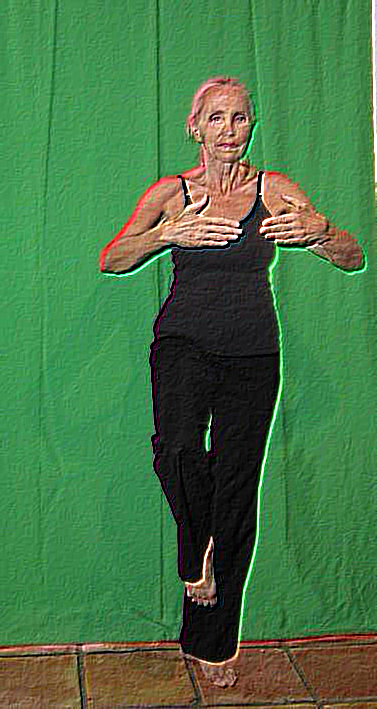 1) Stand straight with legs as close together as possible.
1) Stand straight with legs as close together as possible.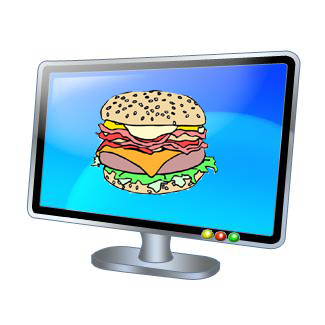 With TV, if we can’t fast forward past it, we wait for a commercial to be over to watch the rest of our program and, even though we are multi-tasking on our computer, phone, tablet during the commercial; some of the marketing message aimed at us about some mouth-watering food, bathed in high fat (that clogs arteries), oil devoid of the good stuff (essential fatty acids and antioxidants) and very processed sugar (which always contains high calories and, when processed, offers no nutritional value) reaches us and, the next day, we want this very item when we are at the mall, coming home from sports or school.
With TV, if we can’t fast forward past it, we wait for a commercial to be over to watch the rest of our program and, even though we are multi-tasking on our computer, phone, tablet during the commercial; some of the marketing message aimed at us about some mouth-watering food, bathed in high fat (that clogs arteries), oil devoid of the good stuff (essential fatty acids and antioxidants) and very processed sugar (which always contains high calories and, when processed, offers no nutritional value) reaches us and, the next day, we want this very item when we are at the mall, coming home from sports or school. Then there are the friendly fast food restaurants that have built a culture around our ignorance. We were pulled in by the special toys they give away and our belief that, if there are 5 major companies advertising sugar cereal for our kids, it must be good for them. Or if there are 6 major companies all competing for the burgers, fries and drinks market; they all must have studied the nutrition behind the food and it must be healthy and safe for us as consumers. After all, they all have salads, now, so that would make for a balanced meal. And the FDA wouldn’t allow them to be in business if their food was no good.
Then there are the friendly fast food restaurants that have built a culture around our ignorance. We were pulled in by the special toys they give away and our belief that, if there are 5 major companies advertising sugar cereal for our kids, it must be good for them. Or if there are 6 major companies all competing for the burgers, fries and drinks market; they all must have studied the nutrition behind the food and it must be healthy and safe for us as consumers. After all, they all have salads, now, so that would make for a balanced meal. And the FDA wouldn’t allow them to be in business if their food was no good. One way we measure our weight is by using the Body Mass Index. A great way to measure what this index defines is to feel whether or not we can pinch much excess skin around our body. If we can, we are probably carrying extra weight (which scientists have deemed is unhealthy for our organs, our body systems and emotionally), and we have just used a less clinical, simpler method of defining whether our body mass index is high. There are suggestions below as to what to do should we find this in ourselves. The result of this index is what people usually see when they look our way.
One way we measure our weight is by using the Body Mass Index. A great way to measure what this index defines is to feel whether or not we can pinch much excess skin around our body. If we can, we are probably carrying extra weight (which scientists have deemed is unhealthy for our organs, our body systems and emotionally), and we have just used a less clinical, simpler method of defining whether our body mass index is high. There are suggestions below as to what to do should we find this in ourselves. The result of this index is what people usually see when they look our way.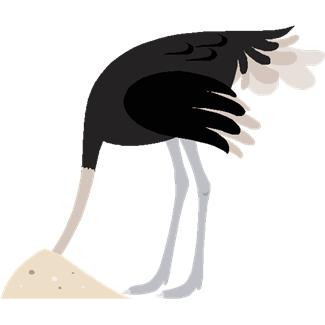 Craving food is like any other urge. It is physiological, (1) sometimes set off by emotions which activate chemicals and (2) sometimes set off by chemicals which trigger emotions and reactions. We must become educated and sensitive to our situation, instead of taking the ostrich approach. What I mean is that we can feel great about ourselves with a little book knowledge and a little self-love. Knowledge truly gives us the power we need not to bury our heads in our pillow in hopelessness the same way as the ostrich in this graphic is burying his head in the sand. There is a prejudice about the ostrich from which this image comes. He does not bury his head in the sand. The male ostrich digs such a deep hole for the protection of the ostrich eggs [5-6 feet] that it looks as if his head is buried in the sand. It is not. To avoid making judgments without full awareness, we need to educate ourselves.
Craving food is like any other urge. It is physiological, (1) sometimes set off by emotions which activate chemicals and (2) sometimes set off by chemicals which trigger emotions and reactions. We must become educated and sensitive to our situation, instead of taking the ostrich approach. What I mean is that we can feel great about ourselves with a little book knowledge and a little self-love. Knowledge truly gives us the power we need not to bury our heads in our pillow in hopelessness the same way as the ostrich in this graphic is burying his head in the sand. There is a prejudice about the ostrich from which this image comes. He does not bury his head in the sand. The male ostrich digs such a deep hole for the protection of the ostrich eggs [5-6 feet] that it looks as if his head is buried in the sand. It is not. To avoid making judgments without full awareness, we need to educate ourselves. In my constant endeavor to understand what is going on in schools, it has been one of my big concerns to comprehend the lack of emphasis on nutrition in schools in this country.
In my constant endeavor to understand what is going on in schools, it has been one of my big concerns to comprehend the lack of emphasis on nutrition in schools in this country. The choice of food is also crucial. I once had a student who stopped at a well-known fast food drive through (which I won’t name to avoid any publicity!) every morning and wondered why her daughter was complaining of stomach ache every day and systematically missed the first class.
The choice of food is also crucial. I once had a student who stopped at a well-known fast food drive through (which I won’t name to avoid any publicity!) every morning and wondered why her daughter was complaining of stomach ache every day and systematically missed the first class.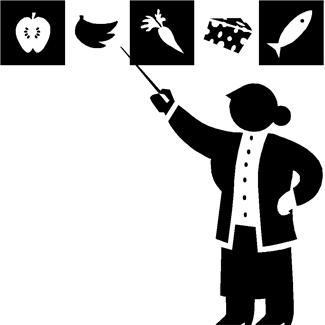 Worse still, very little is taught about practical, everyday nutrition. Yes, in biology class, students learn about the different food groups; they learn about carbs, fats and sugars…But kids are not taught to EAT the right way.
Worse still, very little is taught about practical, everyday nutrition. Yes, in biology class, students learn about the different food groups; they learn about carbs, fats and sugars…But kids are not taught to EAT the right way.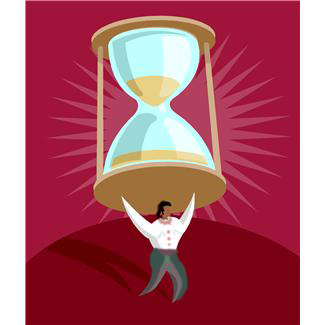 In the past weeks, I have been hearing over and over again how people don’t have the time in their busy lives to work on their weight. I am going to talk about weight loss, but the same applies to weight gain of any kind. It also applies to many of life’s weights such as feeling sad, angry, bullied, alone or misunderstood.
In the past weeks, I have been hearing over and over again how people don’t have the time in their busy lives to work on their weight. I am going to talk about weight loss, but the same applies to weight gain of any kind. It also applies to many of life’s weights such as feeling sad, angry, bullied, alone or misunderstood. 1) GRATITUDE. The most important part of the day occurs as it begins. We get a chance to rejoice, to jump up and down with glee, to fill our hearts with warm happiness. Why? Because we awoke and have another shot at growing, creating something great, helping someone out and getting help ourselves.
1) GRATITUDE. The most important part of the day occurs as it begins. We get a chance to rejoice, to jump up and down with glee, to fill our hearts with warm happiness. Why? Because we awoke and have another shot at growing, creating something great, helping someone out and getting help ourselves. 6) TOP OF THE AGENDA. When we want to do something, we usually schedule it in, right? Think about what happens when we feel like eating a particular food. Funny how we have no problem scheduling that in. Yet, when we want to remove some pounds from our stomach by doing some tai chi or fitness activity that would take less time than it would take to go get the food we craved, we don’t have (make) the time.
6) TOP OF THE AGENDA. When we want to do something, we usually schedule it in, right? Think about what happens when we feel like eating a particular food. Funny how we have no problem scheduling that in. Yet, when we want to remove some pounds from our stomach by doing some tai chi or fitness activity that would take less time than it would take to go get the food we craved, we don’t have (make) the time. Many people live their lives in this state of hurt yet keep it buried deep inside not realizing that it affects their world and all the relationships around them. What does it take for a person to be able to brush herself off and stand strong when life’s circumstances seem too difficult to bear? It takes Courageous Communication to transform our lives from a place of fear and uncertainty to a place of bold courage and action.
Many people live their lives in this state of hurt yet keep it buried deep inside not realizing that it affects their world and all the relationships around them. What does it take for a person to be able to brush herself off and stand strong when life’s circumstances seem too difficult to bear? It takes Courageous Communication to transform our lives from a place of fear and uncertainty to a place of bold courage and action. Without personal love and respect, we risk being taken advantage of, walked all over, disrespected or worse. Do we know why? Because other people have not been told how we wish to be treated. If we don’t tell people how to treat us, they are left to their own imagination of what works…and it usually works for them. By communicating to others how we wish to be treated, we set up the relationship for success. We harness the responsibility for our own happiness and by setting the standard of powerful communication, we create the environment to nurture and heal the most important relationships in our life.
Without personal love and respect, we risk being taken advantage of, walked all over, disrespected or worse. Do we know why? Because other people have not been told how we wish to be treated. If we don’t tell people how to treat us, they are left to their own imagination of what works…and it usually works for them. By communicating to others how we wish to be treated, we set up the relationship for success. We harness the responsibility for our own happiness and by setting the standard of powerful communication, we create the environment to nurture and heal the most important relationships in our life. My self-esteem was shaky, I now surmise, because I allowed this friend to make decisions for us. I liked the activities we did, I liked her friends and status (not a good reason to hang with someone) and I wanted friends, thinking I needed her as one of them. I didn’t realize until we stopped hanging out together that our relationship put a strain on me and, when it was over, I was relieved.
My self-esteem was shaky, I now surmise, because I allowed this friend to make decisions for us. I liked the activities we did, I liked her friends and status (not a good reason to hang with someone) and I wanted friends, thinking I needed her as one of them. I didn’t realize until we stopped hanging out together that our relationship put a strain on me and, when it was over, I was relieved. 5. Ask the physical education coach to help by teaching us to hit the punching bag or body bag. This would not be for the purpose of punching our opponent out. It would be:
5. Ask the physical education coach to help by teaching us to hit the punching bag or body bag. This would not be for the purpose of punching our opponent out. It would be: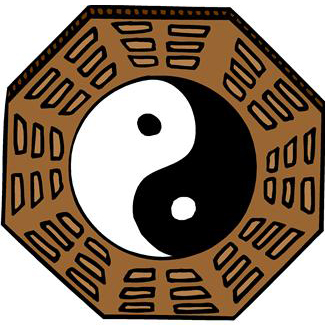 9. Take Tai Chi lessons. As with kung fu, these lessons would not be learned to assault the bully. They would be to learn to be patient, forgiving and stress free while we became confident, fluid in movement and skilled at understanding give and take.
9. Take Tai Chi lessons. As with kung fu, these lessons would not be learned to assault the bully. They would be to learn to be patient, forgiving and stress free while we became confident, fluid in movement and skilled at understanding give and take.





